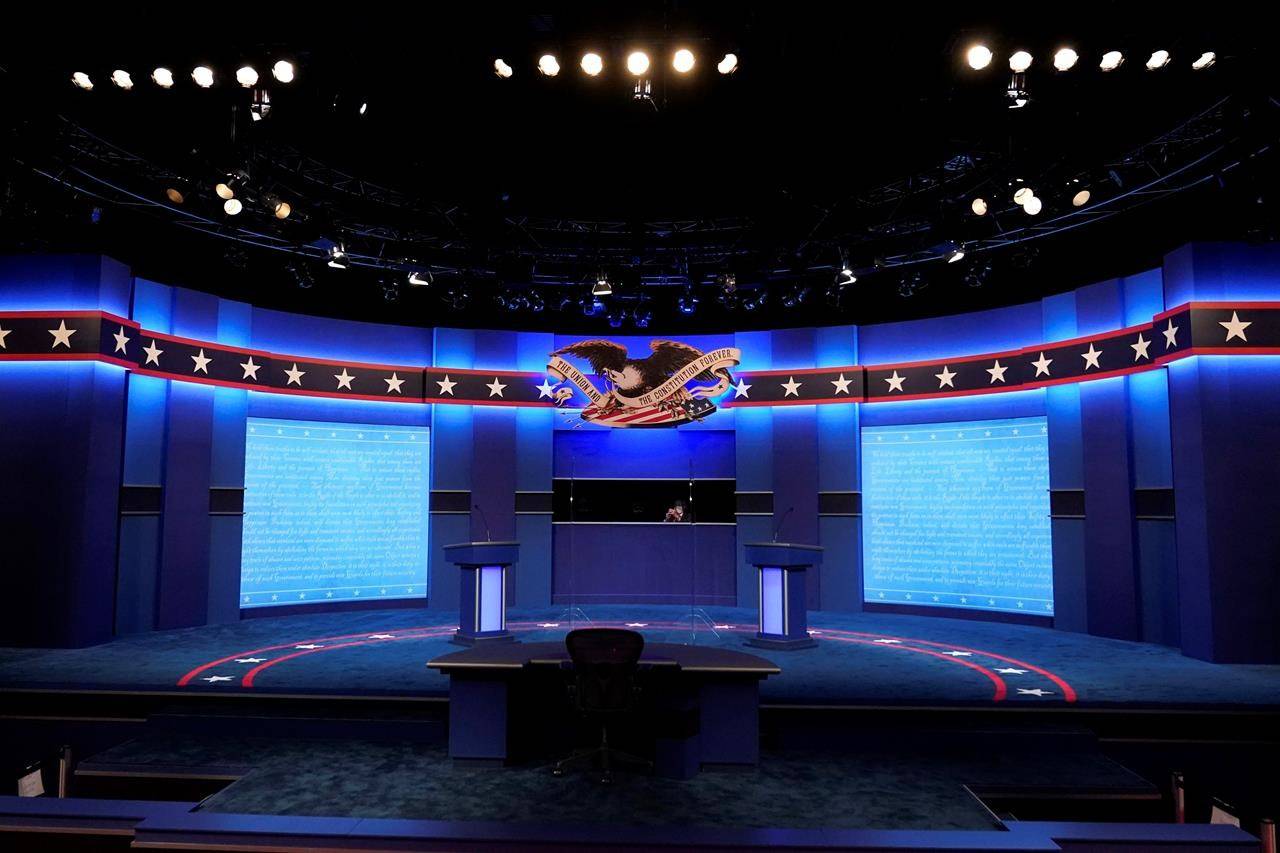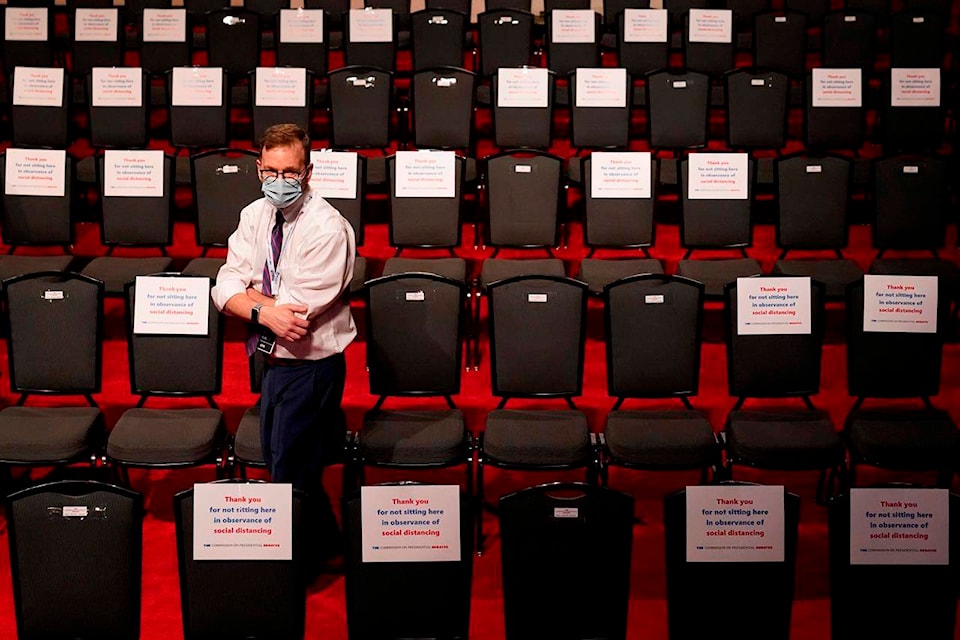NASHVILLE — After a raucous first debate led organizers to introduce a mute button, Thursday’s second and final meeting between President Donald Trump and Democratic challenger Joe Biden was a downright civil affair.
Whether because of that button or the terrible reviews — especially for Trump — the candidates interrupted each other far less frequently, even as they clashed on issues including the coronavirus, crime and global warming.
While Trump and Biden responded to the other’s answers — shaking their heads disapprovingly or smiling, in the case of Biden — the two largely avoided speaking over each other.
Trump, in particular, was on his best behaviour, especially early on, and especially when it came to the moderator, whom he’d repeatedly denigrated before the debate.
“So far, I respect very much the way you’re handling this,” Trump said to NBC’s Kristen Welker when she gave him time to respond to Biden at one point.
The scene inside the sparsely populated college arena was representative of the performance on stage. The audience followed the rules exactly as laid out — they were remarkably silent throughout the 90-minute debate, and everyone appeared to be wearing masks.
Because of the pandemic, only around 200 people were seated inside the debate hall at Belmont University in Nashville. That included a representative of the Commission on Presidential Debates, who was tasked with ensuring each candidate had a two full minutes of uninterrupted time to deliver opening answers on six major topics, according to debate commission chair Frank Fahrenkopf.
A member of each of the Trump and Biden campaigns monitored the person who controlled the mute button backstage, Fahrenkopf told The Associated Press, noting that the button would not be used beyond the first four minutes of each topic.
The button was among a handful of changes implemented by the nonpartisan debate commission to help ensure a more orderly debate following the raucous and widely criticized opening debate 23 days ago. Coronavirus restrictions also remained in place, with attendees required to wear masks at all times and audience members distanced.
Organizers had initially planned to separate the candidates with plexiglass barriers, but the barrier were removed hours before the debate began. A Trump campaign official said the decision was made after White House chief of staff Mark Meadows called Dr. Anthony Fauci, the nation’s highly respected top infectious-diseases expert, during a walkthrough of the venue site.
Meadows put Fauci on speakerphone, and Fauci told those in the room that all a barrier would do was provide a false sense of security, the official said.
Trump was diagnosed with COVID-19 two days after the last debate, and he and the White House have refused to say whether he abided by commission rules and tested negative for the virus before that debate.

